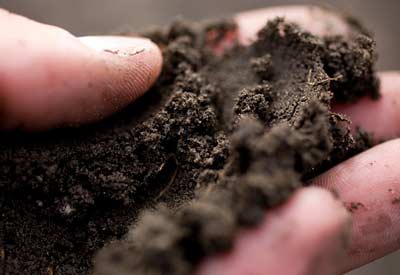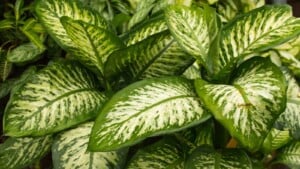How is planting time like opening Christmas presents? There’s a huge temptation to get started days too early. After a long winter, after planning your garden and ordering seeds, we’re all anxious — with visions of sweet corn, squash and greens dancing in our heads — to get in there and start working the soil. Let’s tear the ribbons and the paper off and get those seeds and plants in the ground! For gardeners, the days ahead of spring planting are just as difficult as the day’s before the holiday are for children… and equally filled with anticipation.
But when it comes to planting, it’s best to be patient. Is your soil ready? In other words, is it “friable”? Several factors come into play but for established gardens with previously prepared soil, there are only two: temperature and moisture content. Here’s a list of minimum, maximum and optimal soil temperatures for common vegetables.

BUILT TO LAST!
Pointed Hoe
The curved shape and balanced weight provide momentum for big jobs!
$54.95Learn moreGet your gardens off to a great start and keep them productive with premium quality soils and amendments. Need advice? Our Soils Blog provides the ideas and practical experience you need to get the job done right. Now, let’s grow!
When it comes to knowing the perfect time to start working your soil, guidance and experience are the best teachers. Here’s a list of ten rules from the Colorado Landshare project — a collaboration between ranchers, farmers and gardeners dedicated to sustainability — that address soil conditions prior to planting. The comprehensive list includes preparations for first-time use of previously un-gardened land as well as details on friability and compaction. For even more detailed evaluation of your soil, here’s a page from Mother Earth News that allows you to evaluate every aspect of soil readiness. The seasonally-divided list helps you monitor everything from water infiltration to earthworm abundance.
Most of us just want to know if our soil is dry enough to avoid compaction and keep seeds from rotting. The grandfather-tested method is still best. Pick up a handful of dirt and squeeze. If it crumbles back to the ground without sticking, it’s ready. If you’ve made a mud ball, throw it at some inanimate target you don’t mind getting dirty and go back inside and wait. You’ll be able to open your garden soon enough. Want more tips on soil friability? Check out this page from — who else? — The Old Farmer’s Almanac. Our favorite is the fourth tip: when the weeds start to grow, your soil is ready.
Now, we want to know: is the soil ready where you live? Are you planting? What’s in the ground? Is your soil’s moisture content high, low or just right for this time of year? Tell us.












